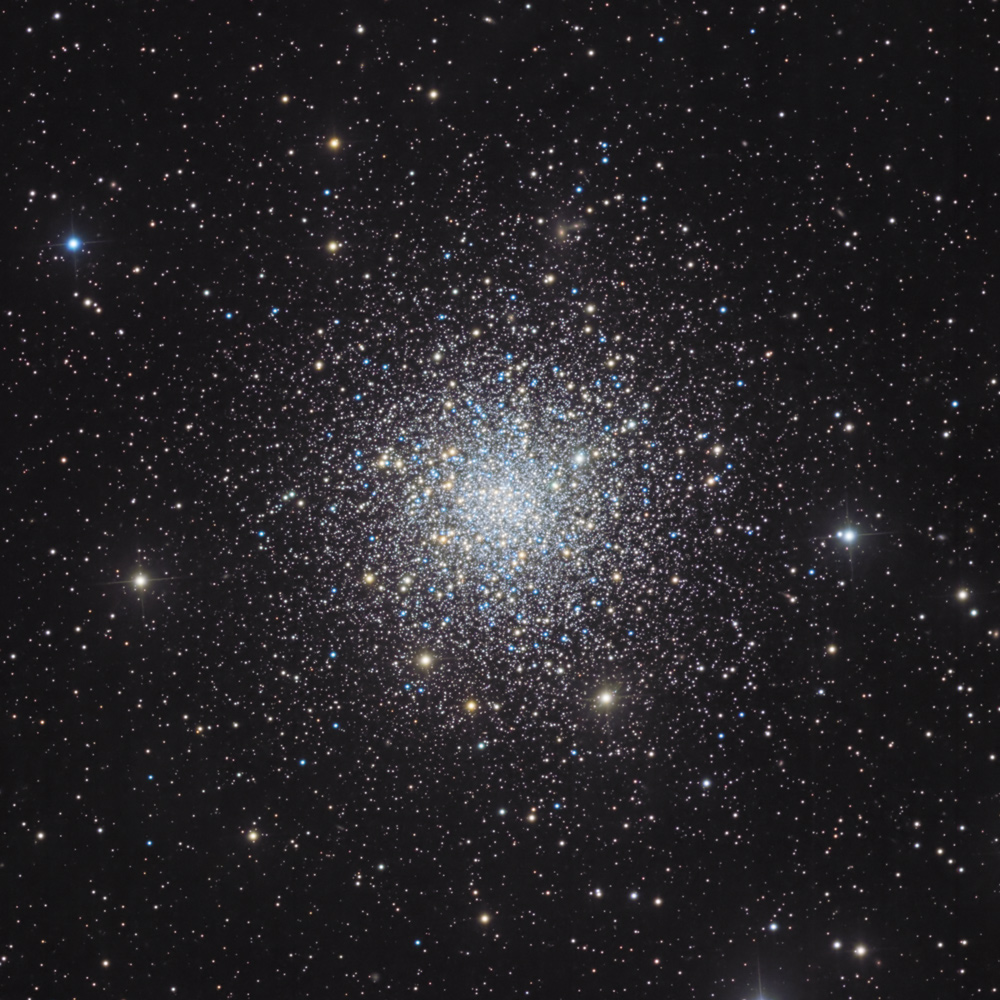

M12: A globular cluster is a group of ancient stars (M12 is thought to be about 12.7 billion years old; by comparison, our sun is about
4.6 billion years old; our galaxy is about 13.5 billion years old, and the universe is thought to be 13.8 billion years old), gravitationally bound to each other, orbiting the core of its
associated galaxy.
M12 is somewhat less densely packed with stars than most globular clusters; M12 was once thought to be a tightly concentrated open cluster, but now is known to be a globular cluster. M12
has fewer low-mass stars than expected; astronomers suspect that gravity has ripped many low-mass stars from M12 as the cluster passed through denser regions of the Milky Way during its
orbit around the galaxy’s center. M12 is thought to have lost up to one million stars this way; it has about 250,000 stars remaining (for comparison, there are estimated to be no more
than 2,000 stars within 50 light years of earth, which is a considerably larger bubble than the size of M12).
M12 is about 23,000 light years from Earth, and is about one-fifth of the angular size of the full moon when viewed from very dark skies; it is roughly 75 light years across. It shines at
magnitude 7.7 (not quite visible with the naked eye even in the darkest skies, but easily seen with binoculars).
Copyright 2021 Mark de Regt